In this guest blog J. Harmer from CrewDriver explores challenges around finding software for production companies, and gives suggestions on how to categorize and evaluate products from a distance.
Introduction
In the event production industry we have a real problem. We use a whole basket of software tools for business, but generally lack tailor-made software for production companies that meet our our unique needs.
Some are great, some are questionable, and often “it’s that or another Excel spreadsheet.”
We’ll even see enterprise software available which was tweaked to fit our workflows from other industries. It’s often like trying to fit a square peg in a round hole with an anvil. By following a few simple suggestions you’ll discover how to tell the difference between which software for production companies are better candidates, and which won’t likely stand a chance to meet your unique needs.
The challenge is we have specialized needs but very, very fuzzy boundaries.
Here’s a few examples:
- We secretly upgrade gear. It’s easier than cross renting, and that lamp isn’t getting used this weekend.
- Hire someone to pretend they work for us, bring their own gear and throw on a bunch of our shirts. i.e. “Do we do urns? Sure… we totally do urns….”
- Clients and install crew won’t/shouldn’t need to know where stuff came from, but load-out, shop and accounting need to know where stuff gets shipped back to and who gets paid (and how to tell if equipment is missing).
- “This has to happen at exactly midnight because it’s NYE” vs. “We might ditch that gig because the client might want to wrap up early but they won’t decide until they’re actually at the podium”.
- Sometimes we need authorization, sometimes confirmation of receipt, sometimes it’s just enough to shout it out the window at 3am because it’s too late for anyone to check their email before the load-in.
Here’s the punchline: Despite every change, no matter how last minute, we’ll make it work, but what made it work may or may not need to be tracked.
We do crazy things, and need tools that can keep up.
Okay, so we need things weirdly flexible. But, why is it so hard to find them?
All software is a combination of rigid and flexible components.
Rigid, or specialized means sturdy, as well as easier to use and configure, but with limits on application. If software is incredibly flexible top to bottom, the complexity level is higher and we need extra support to configure them to our needs… and that can get expensive, fast.
If other industries are making decisions about where the rigid components are, and they don’t match our workflows, they’re awful, and potentially impossible for us to use.
To figure out whether something is going to be a good fit, I use a model that puts software origins into 3 waves:
First Wave (Flaw: incompatible workflows)
Origin: Products built for another industry (i.e. the auto industry).
Good: Stable, predictable functionality, and can handle the stress of volume.
Bad: Workflow compatibility is a crapshoot. Pricing doesn’t match our value.
How to spot: Long history of business, no production companies on the clients page.
Second Wave (Flaw: Unnecessary complexity and questionable stability)
Origin: Software builders for other industries build us products
Good: Basic components tested by others applications.
Bad: Flexibility in the wrong places, previous functionality shoehorned in. Potentially as a result of failing to say no to their early clients feature requests.
How to spot: Some industry clients, but the “about us” includes an any-type catch-all custom software building services (as opposed to just customization available for their product).
Third Wave Software for Production Companies (The Software Goldilocks would choose)
Origin: Built by people who work in the av and live events industry
Good: Functionality comes from a fundamental understanding of how the industry works. Early clients will be users in the production industry. They’ll also use similar terms and language.
Bad: Potentially less development resources, younger products, and variances in regional practices.
How to spot: Production companies on social proof, the founders have a show background.
I’m obviously biased, but good examples of this are Flex, Shoflo and CrewDriver. All built by industry professionals to fix problems that we had with the work we did.
Evaluating beyond the basic product page
There are other things to look out for when evaluating software for production companies beyond who their client base is and what social proof they can deliver. Get in touch with the company and ask questions like:
- How was it designed? (Built in a production house is usually the best thing to hear)
- How often are improvements released? (More often is generally better)
- What sort of crucible has it been through? (Large scale ie. arena clients)
- What do they care about when they track value for their clients? (ie. a worker scheduling themselves is a success)
- What are their historical numbers for delivery? (ie. 900,000 messages sent)
Bonus: the “Third and a half Wave”
In the future, we’ll be looking more and more at software that integrates great pieces from the Third Wave into a single system. Where different products produced by different vendors all share the same show data and propagate changes across from one product to another
In summary/TL;DR:
- We’re big weirdos, with some of the highest flexibility requirements imaginable.
- Building good sproduct is hard. Workflows require flexible and rigid components in the right places and that never happens accidentally.
- The further you go from industry expertise behind the product development the harder it gets to integrate into our business practices and actually derive value from.
Thanks!
-J.
 Who is J.Harmer?
Who is J.Harmer?
My name is J. Harmer. I’m the founder of GetWorkers (the company behind CrewDriver). I have 12 years of production experience and I took a break to start a software company to build crew communication tools. That was 4 years ago, since then we’ve sent over a 900,000 text messages and scheduled over 50,000 shifts!
Also, I’ll be at the Flex User Conference talking about team communication. So if you have any questions for me, email me or come see me there!


